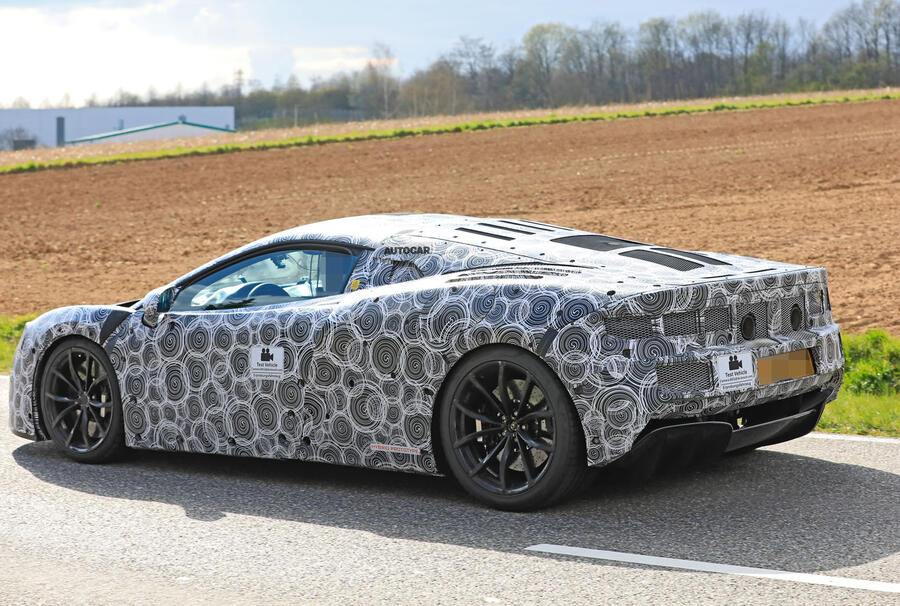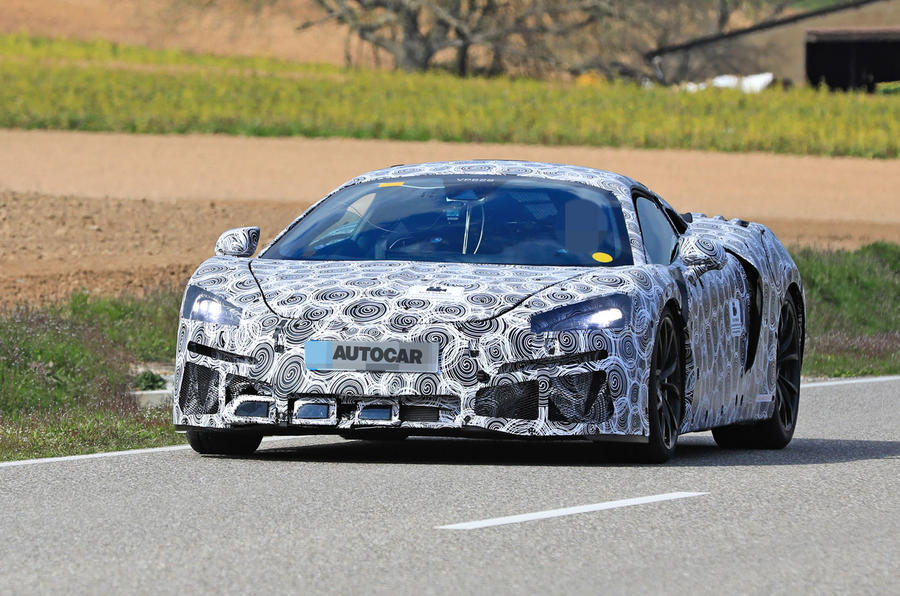McLaren will transition to an electrified era in earnest next year with the first truly all-new series-production car since the 2011 MP4-12C – and it’s a plug-in hybrid.
The new model will be launched in the first quarter of next year and go on sale in mid-2021. It will serve as a replacement for the long-established Sports Series range, which includes the 540C, 570S and 600LT. That range will end with the imminent introduction of the GT4-racer-inspired 620R.
The Woking-based maker will move instead to what it calls the High Performance Hybrid (HPH) sub-category, positioned between the McLaren GT and current crop of Super Series models. The new car will effectively replace the 570S, but its price is expected to rise above that of today’s Sports Series cars.
As well as using ground-up new carbonfibre-rich underpinnings, the as yet unnamed model will be the first modern-day McLaren to ditch the venerable Ricardo-sourced 3.8-litre twin-turbo V8. In its place will be another Ricardo-built powertrain: a twin-turbocharged V6 mated to a plug-in hybrid system claimed to offer “astonishing levels of performance and a uniquely intense driving experience”.

Few details of the powertrain’s key specs have been revealed, other than that it will feature “medium-range” pure-electric running, which, Autocar understands, will be a touch under 20 miles. Total system output will be greater than the 562bhp offered by the 570S and is expected to be well in excess of 600bhp. A substantial increase in torque, enabled by the electric motors and available instantly from low revs, is also on the cards.
The downside will be an increase in kerb weight due to the battery and powertrain complexity. However, McLaren boss Mike Flewitt has been candid when previously speaking to Autocar. “I’ve always said my ambition was to launch the hybrid at the same weight as the outgoing car. We’re not going to hit that, but we’re going to be within 30-40kg,” he said. As such, a kerb weight of around 1500kg is expected. For reference, the hybrid Honda NSX is 1725kg.
The key ingredient to keeping weight down will be the all-new McLaren Carbon Lightweight Architecture (MCLA). It replaces the Monocell carbonfibre tub that made its debut on the MP4- 12C, although it was further developed as the MonoCell II for 2015. The MCLA tub will, like the Monocell, combine a carbonfibre central structure with aluminium subframes. It was designed and developed at McLaren’s Composites Technology Centre in Sheffield, where it will also be produced.
Flewitt claims the ultra-light new chassis is “every bit as revolutionary” as the MonoCell was when it was introduced and has “greater structural integrity and higher levels of quality”. It is also said to allow greater bodystyle and powertrain flexibility to help McLaren further differentiate models in each range and offer everything from pure-combustion models to fully electric powertrains.

Join the debate
Add your comment